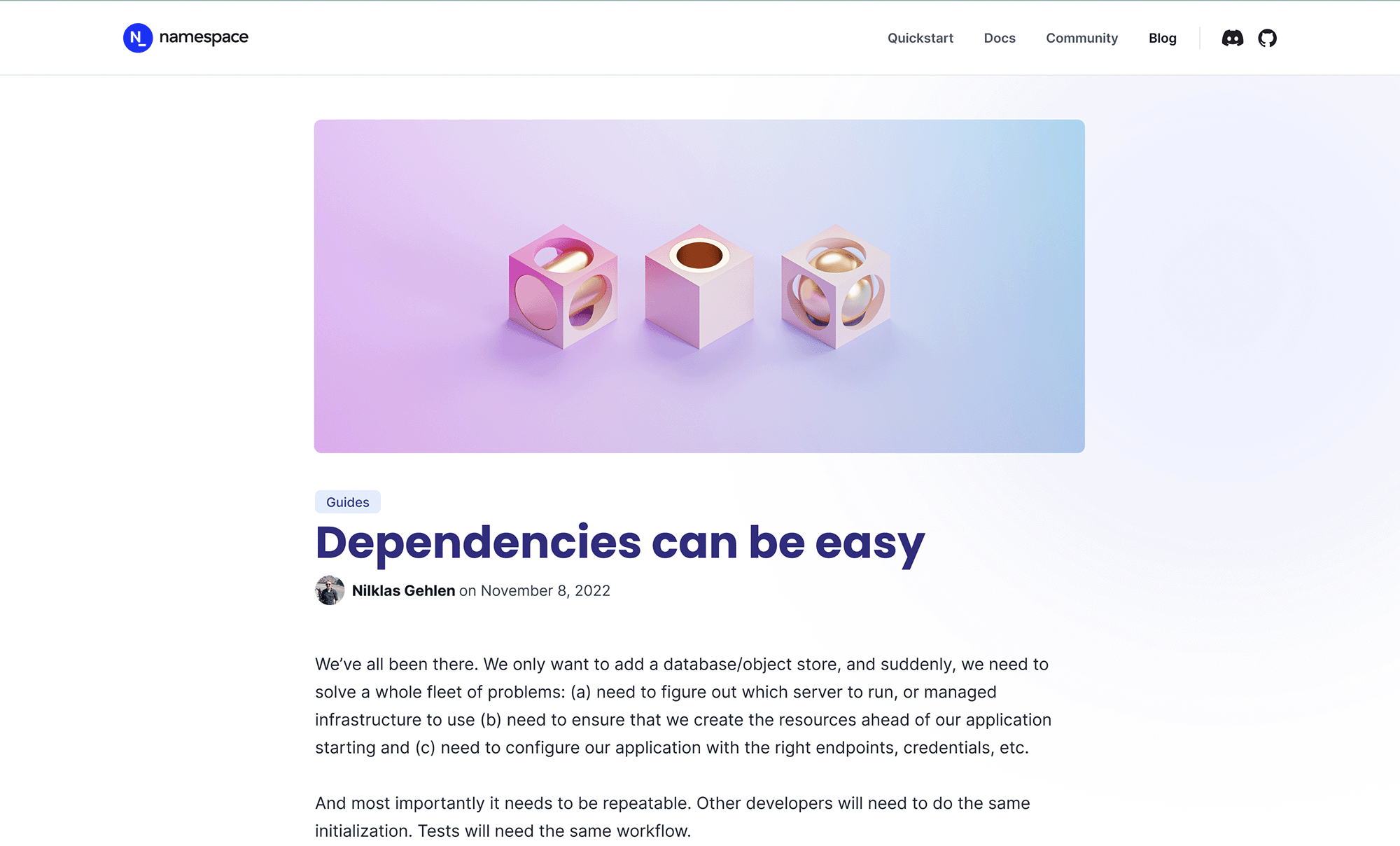Another edition of our Changelog! We'll keep you up-to-date with product and documentation changes on a regular basis.
Highlights
- Revamped our documentation (including a roadmap sneak peek!) and quickstart.
- Two new guides: Dependencies can be easy and Browser-based tests, with representative stacks.
- Open-source
ns:ns testhas been revamped,ns prepare existingwas introduced, deployment diagnostics have been improved, and more.
New documentation
We keep working on building a great set of documentation, and we've taken the step of merging it into namespace.so. It will be followed by site-wide search, which should make it simple to navigate between documentation, guides, and more.
A short preview of upcoming ns features are now also available under Roadmap
in the documentation.
Soon we'll tell you more about the upcoming collaboration tools, which build on
ns and will also be a part of namespace.so. A sneak peek should be available
in our next Changelog.
Two new guides
The team put together two new guides:
- Dependencies can be easy: which showcases how Namespace helps you manage dependencies, relying on reusable building blocks.
- Browser-based tests, with representative stacks: explores how Namespace makes it simple and maintainable to run high-fidelity browser-based tests. No need to mock your dependencies!
Open-source platform
We're now up to ns 0.0.91 (from 0.0.80 in the last Changelog). We've been
addressing community feedback and getting the onboarding experience streamlined.
New features
ns testhas been revamped:- Tests can now refer to resources directly, injecting values via the environment or args, removing the need to manually parse the resource configuration.
- You can now easily parameterize tests by supplying args and env per test.
ns prepare existinghas been introduced:- Configures a Namespace environment to point at an existing Kubernetes cluster.
- Includes first-class support for Docker Hub as the backing registry.
Improvements
- Servers can now specify
grpcorgrpcsas the service kind (httpandtcpwere already supported). This allows Namespace to properly setup reverse proxying for gRPC services. - Deployment times are tracked per server, which allows to stream deployment
diagnostics earlier when a deployment fails. Applies to
ns dev,ns deployandns test. ns testnow renders test drivers and displays diagnostics (e.g. logs) if they run for a long time.ns testno longer runs generated tests by default, pass--allto run all tests, including startup tests.- Improved
nsversion checking to allow for auto-updates more frequently than once per day (we're shipping features quickly!). - Secrets by default now operate at the workspace level, rather than at the server level.
Bugs fixed
- We've fixed a bug where we were waiting for services to be created, even when there were no additional dependencies on those services.
- Fixed various cancelation / exit issues related to terminal handling.
ns testbackend addresses injected to frontends under test are now the internal cluster address.
Upcoming
We're heads-down on improving our documentation, adding coverage and howtos. There will be updates to share in the coming days.
A new light version of the guides and documentation is also coming... a preview below.

Learning
If you’d like to check out what Namespace has to offer, schedule a demo! We use these sessions to learn about your pain points, and are happy to provide advice based on what our expertise and infrastructure in the market.
Wrap-up
Join the team on Discord, follow us on Twitter for updates, or star us on Github.

